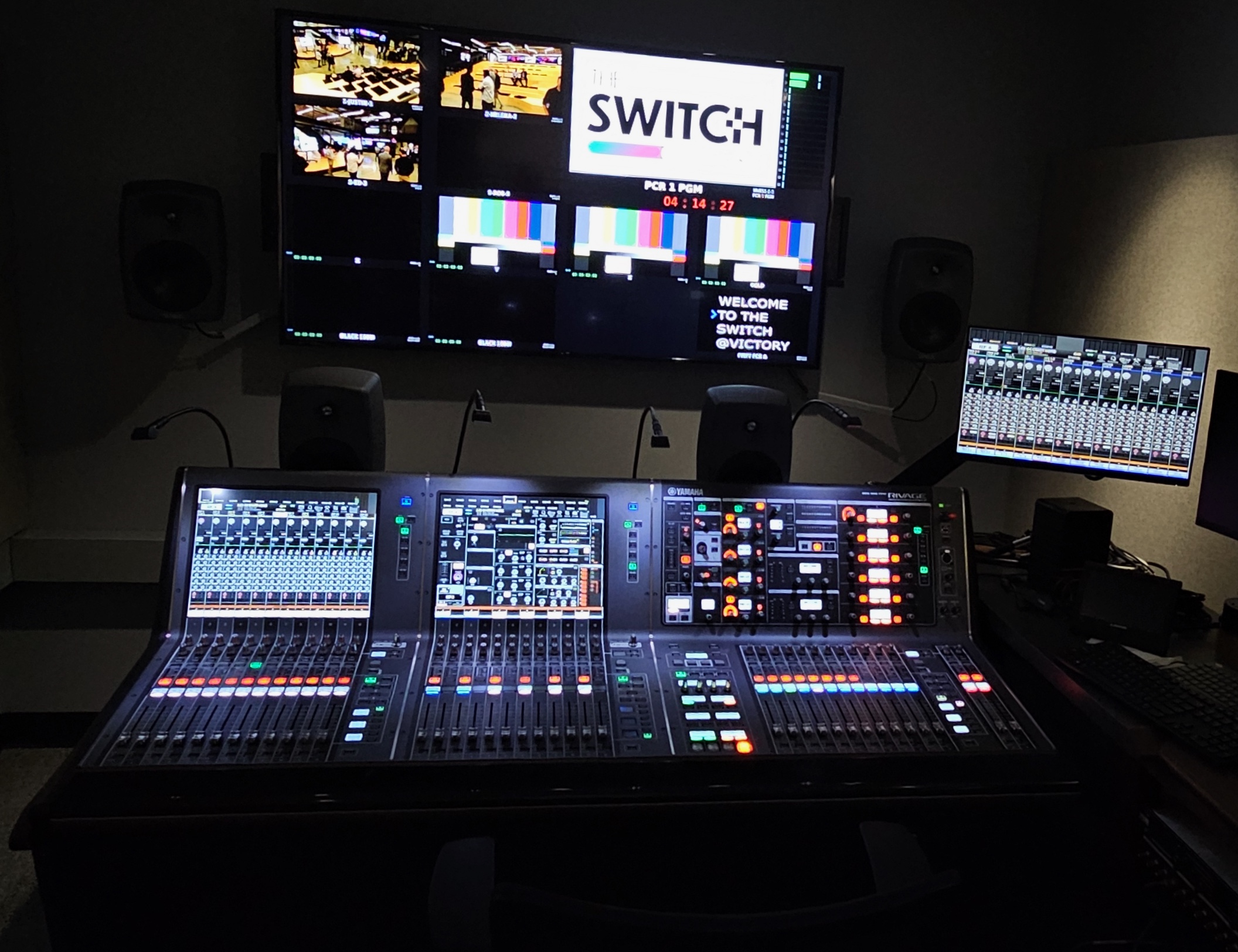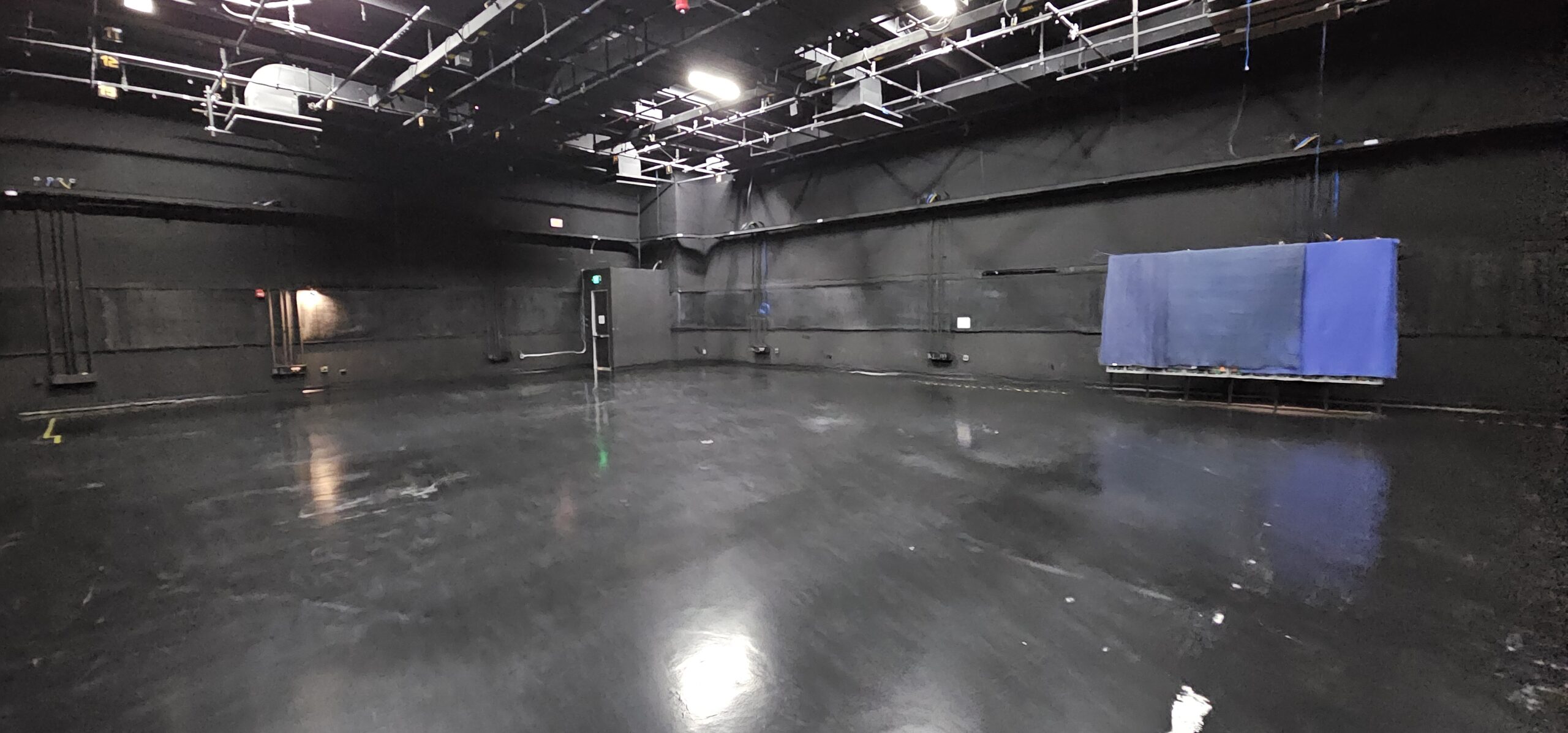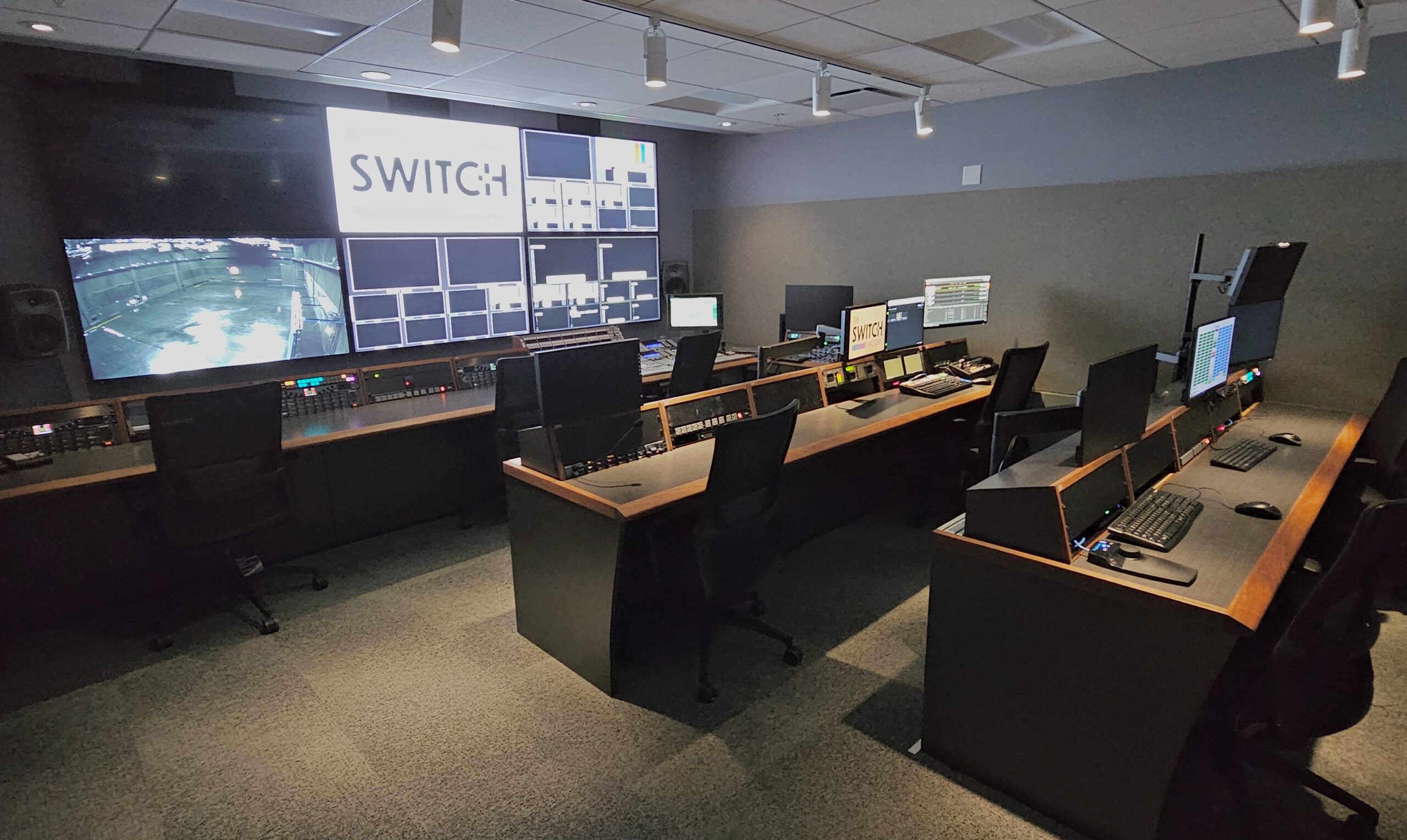Tata’s Launch of The Switch@Victory Begins New Era of Global Production
Story Highlights
The Switch was one of the first companies in the U.S. to embrace remote production at its facilities in Los Angeles. And the grand opening of its new home in Los Angeles last week not only brings two separate Switch operations in Burbank and Motor Avenue under one roof but it also kicks off an ambitious global plan by Tata to create connected production centers around the globe in places like London, Europe, and Asia. But, first, the focus is on getting the new 66,000 sq. ft. facility up and running and meeting the needs of clients both old and new.
Explains Dhaval Ponda, global head of media and entertainment services, Tata Communications: “We were looking to invest in a new facility and consolidate our West coast operations in a significantly bigger presence. This facility came along at exactly the right time, and it is very well suited to what we are doing currently, and it was ideal for what we wanted to build on for the future. There are very few facilities where you can enter it and just feel ‘wow.’ This is one of them and we have paid a lot of focus and attention to building something that will suit us for the next 10 years.”
Ponda says the investment in The Switch@Victory is a show of faith from Tata to those on the production side of the business. The facility is designed to support live content production from rightsholders of all sizes – from major sports and esports leagues to lower-tier and college sports teams to awards organizers and entertainment brands to leading global enterprises livestreaming corporate events.
“If you talk to our customers in the Americas, they will call us as the media cloud partners for Americas,” says Ponda. “If you go to Europe, they’ll refer to us as the incumbent for the region for getting things like motor sports or even football to areas outside of Europe. And if you go to Asia, they will refer to us as the single partner to bring global sports into all parts of Asia, South Korea, Japan, Singapore, Hong Kong, and so on. So, for us, this is definitely the beginning of a significant transformation for live production services.”
Among the facility highlights are four sound stages with powered lighting grids and green screens; large multi-row seating production control rooms with best-of-breed switchers and digital audio consoles; multiple insert studios for media training, live shots, and satellite media tours; video and audio editing stations; and plenty of supporting facilities like dressing rooms, office space, and more.
The facility is also connected to Tata Communications’ global low-latency video delivery network and also has satellite downlinks to deliver raw feeds, audio, and communication to control rooms within the facility.
Paul Weldon, The Switch, EVP of sales, says the facility is designed to meet just about any need, with office space for either temporary or full-time clients as well as flexible production rooms that can be reconfigured for a number of needs.
“Every space can become production space as we have the ability to plug in anywhere,” he says of the interior facility, the loading dock, or even the parking lot where additional production trucks can be rolled in for more production support or even to host shows. “And because all of the content sits on our network, we can do remi productions, on-site productions, or cloud productions.”

The Switch@Victory facility currently features Yamaha audio consoles and will be adding Calrec consoles in the future.
The facility’s control surfaces for equipment like production switchers and replay operations are very flexible, allowing for equipment like the Ross Video Carbonite switchers, Grass Valley Kayenne switchers, EVS XT3 replay servers or Ross Xpression graphics systems to be moved around the facility as needed. In addition, all the equipment licenses can be flipped to 4K mode.
As for the studios, the largest one measures 3,840 sq. ft. and is also one of the few studios in Southern California that is rated for pyrotechnic use. The second-largest studio measures 1,200 sq. ft. That studio is also in an area of the facility that can be cornered off to allow for more privacy for talent and guests.
Ponda says The Switch and Tata team have worked hard to get the facility up and running as the entire move and installation of new gear and facilities was managed in house.
“The team knows the solutions that our current customers require, and they are also very much aware of what is the next wave of technology to be deployed here,” he adds. “I am immensely proud of the team and the work that has gone into this facility.”
Defining the Future
Understanding those needs has required some proof of concepts and Ponda says the goal is working with clients to better understand the various workflows and how The Switch can best meet future needs.
“We are spending a lot of time doing POCs with our industry partners so we can really understand what use cases make sense,” he says. “There’s a lot of talk and a lot of interest in new workflows but those only make sense if you are enhancing the end user experience. And that means either it is bringing additional monetization for content owners, or they can use technology to do significantly more in a cost effective manner.”
The POCs include everything from productions where everything is on premises to full cloud-based productions. Key is sitting down with CEOs and CTOs and understanding three-to-five-year roadmaps and how Tata can best meet future needs.
“There will be a healthy balance between on-premises and cloud-based workflows,” says Ponda. “It’s a slow learning curve, but the media industry has taken firm steps towards virtualization of majority of these workflows. We want to be at the right place at the right time with our partners and if we do that the business will be in a very good place to not only survive the cyclical nature of this industry but also to be a good futureproof technology partner for a host of media organizations.”
Owning The Tech Stack
What’s next for Tata? Ponda says the company is currently looking for facilities around the world which could complement The Switch@Victory.
“It is very important for us to find the right facility with the right set of anchor partners to grow with,” he says. “And those could be content related, venue related, or a location that works well. But the decision making criteria focuses on whether the facility has ample opportunity to grow into the future as we are super focused in terms of where the industry is going.”
He adds that the company will be cautious in terms of decision making as the goal is a long-term investment rather than rushing in to create a business to sell off. And that commitment goes for the internal team as well.
“We are in this for the long-term sustainable business,” he says. “We expect our team that is doing the first renewal with a client to be around for the second or third renewal. And we want to ensure that we are in a facility that is supporting the current requirements of live production services but is also on the right path for when the cloud transformation becomes mainstream.”
As for that cloud transformation, the company has already laid a foundation as Tata has its own cloud technology stack, allowing it to better meet the demands of video content creators who want to use the cloud.
“Video, and in particular live video behaves very differently on the cloud,” says Ponda. “You cannot just assume and make a straight line assumption as to how you’re going to solve some of these existing workflows in the cloud. And that is where we have seen that a lot of industry stakeholders come to us after trying to make these workflows work on a public, hyperscale cloud infrastructure. It did not really work, and if it did work, it was not economically viable.”
That is why Tata has a global video, native media cloud and media edge deployed, and it is currently supporting low latency video streaming, cloud-native play applications, video streaming applications, and OTT services going to tens of thousands of viewers simultaneously.
“Our approach has been highly focused on video native cloud video native edge, so that the attenuation of the cloud elements is done exclusively for video,” explains Ponda. “And that is where we’ve had a lot of validation from our customers.”
The goal is to continue to transform not only how the broadcast and production industry views Tata but Tata’s value proposition to production professionals and content creators.
“The advantage for us is that we own our own infrastructure, whether it comes to video transmission or the media cloud,” adds Ponda. “So, we can offer a single contract and a single SLA for media cloud, media edge managed video transmission, and managed master control room services. There are no gaps in terms of what we own, and people don’t have to reach out to multiple vendors to solve and triangulate the problem.”
Ponda says that is resonating with CTOs looking to work with less technology partners and vendors.
“There’s an economic advantage but, more importantly, it’s about accountability,” he adds. “We are taking the accountability through a single team, but also contractually we are offering them an SLA and a commercial SLA that spans three or four different elements. And that simplistic approach has really worked quite well.”


